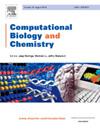通过变分量子神经网络预测新合成的肝素模拟物作为肝素酶抑制剂在癌症治疗中的作用
IF 2.6
4区 生物学
Q2 BIOLOGY
引用次数: 0
摘要
癌症仍然是导致全球死亡的主要原因,其主要驱动力是异常细胞不受控制的增殖。恶性肿瘤(如癌)起源于上皮细胞的无节制生长,并产生 FGF 和 VEGF 等生长因子,通过肝素介导的硫酸肝素蛋白多糖降解促进血管生成和肿瘤进展。壳聚糖及其衍生物有望抑制肿瘤的生长和转移。本研究旨在研究新合成的硫酸化壳聚糖低聚物作为肝素模拟物对肝素酶的抑制作用,评估其对 SH-SY5Y、HCT116、A549 和 MDA-MB-231 癌细胞系的细胞毒性作用。此外,它还试图利用变量子神经网络(VQNN)来预测和验证细胞毒性结果,将量子计算方法整合到新型抗癌化合物的评估中。VQNN 算法被用于分析硫酸化壳聚糖低聚物的抗癌效果。来自湿实验室实验的细胞毒性数据验证了该模型的预测性能。VQNN 模型在评估抗癌化合物方面表现出很强的预测能力。具体来说,该模型的平均绝对误差(MAE)为 6.5844,表明其趋势与实验结果相似。此外,该模型的 R2 值为 0.6020,反映出预测结果与观察结果之间具有中等程度的相关性。这些结果凸显了将基于量子的机器学习模型整合到癌症研究中的潜力。VQNN 有效地预测了实验结果,展示了其在评估新型抗癌化合物方面的实用性。这种方法可以简化候选疗法的识别和优化过程,从而加快药物发现的速度。此外,研究结果还支持了量子计算技术在应对复杂生物学挑战方面的不断发展,有助于针对肿瘤生长和血管生成的创新癌症治疗策略。本文章由计算机程序翻译,如有差异,请以英文原文为准。
Prediction of newly synthesized heparin mimic’s effects as heparanase inhibitor in cancer treatments via variational quantum neural networks
Cancer remains a leading global cause of death, primarily driven by the uncontrolled proliferation of abnormal cells. Malignant tumors, such as carcinomas, originate from unchecked epithelial cell growth and produce growth factors like FGF and VEGF, which promote angiogenesis and tumor progression through heparanase-mediated degradation of heparan-sulfate proteoglycans. Chitosan and its derivatives have shown promise in inhibiting tumor growth and metastasis. This study aims to investigate newly synthesized sulfated chitosan oligomers as heparin mimics to inhibit heparanase, evaluating their cytotoxic effects on SH-SY5Y, HCT116, A549, and MDA-MB-231 cancer cell lines. Moreover, it seeks to leverage a variational quantum neural network (VQNN) to predict and validate cytotoxicity outcomes, integrating quantum computing methods into evaluating novel anticancer compounds. The VQNN algorithm was applied to analyze the anticancer effects of sulfated chitosan oligomers. Cytotoxicity data from wet lab experiments validated the model’s predictive performance. The VQNN model demonstrated strong predictive capabilities in evaluating anticancer compounds. Specifically, it achieved a mean absolute error (MAE) of 6.5844, indicating a similar trend to the experimental results. Additionally, the model obtained an R2 value of 0.6020, reflecting a moderate level of correlation between predicted and observed outcomes. The results underscore the potential of integrating quantum-based machine learning models into cancer research. The VQNN effectively predicted experimental outcomes, showcasing its utility in assessing novel anticancer compounds. This approach could speed up drug discovery by streamlining the identification and optimization of therapeutic candidates. Furthermore, the findings support the ongoing development of quantum computing techniques for tackling complex biological challenges, contributing to innovative cancer treatment strategies that target tumor growth and angiogenesis.
求助全文
通过发布文献求助,成功后即可免费获取论文全文。
去求助
来源期刊

Computational Biology and Chemistry
生物-计算机:跨学科应用
CiteScore
6.10
自引率
3.20%
发文量
142
审稿时长
24 days
期刊介绍:
Computational Biology and Chemistry publishes original research papers and review articles in all areas of computational life sciences. High quality research contributions with a major computational component in the areas of nucleic acid and protein sequence research, molecular evolution, molecular genetics (functional genomics and proteomics), theory and practice of either biology-specific or chemical-biology-specific modeling, and structural biology of nucleic acids and proteins are particularly welcome. Exceptionally high quality research work in bioinformatics, systems biology, ecology, computational pharmacology, metabolism, biomedical engineering, epidemiology, and statistical genetics will also be considered.
Given their inherent uncertainty, protein modeling and molecular docking studies should be thoroughly validated. In the absence of experimental results for validation, the use of molecular dynamics simulations along with detailed free energy calculations, for example, should be used as complementary techniques to support the major conclusions. Submissions of premature modeling exercises without additional biological insights will not be considered.
Review articles will generally be commissioned by the editors and should not be submitted to the journal without explicit invitation. However prospective authors are welcome to send a brief (one to three pages) synopsis, which will be evaluated by the editors.
 求助内容:
求助内容: 应助结果提醒方式:
应助结果提醒方式:


